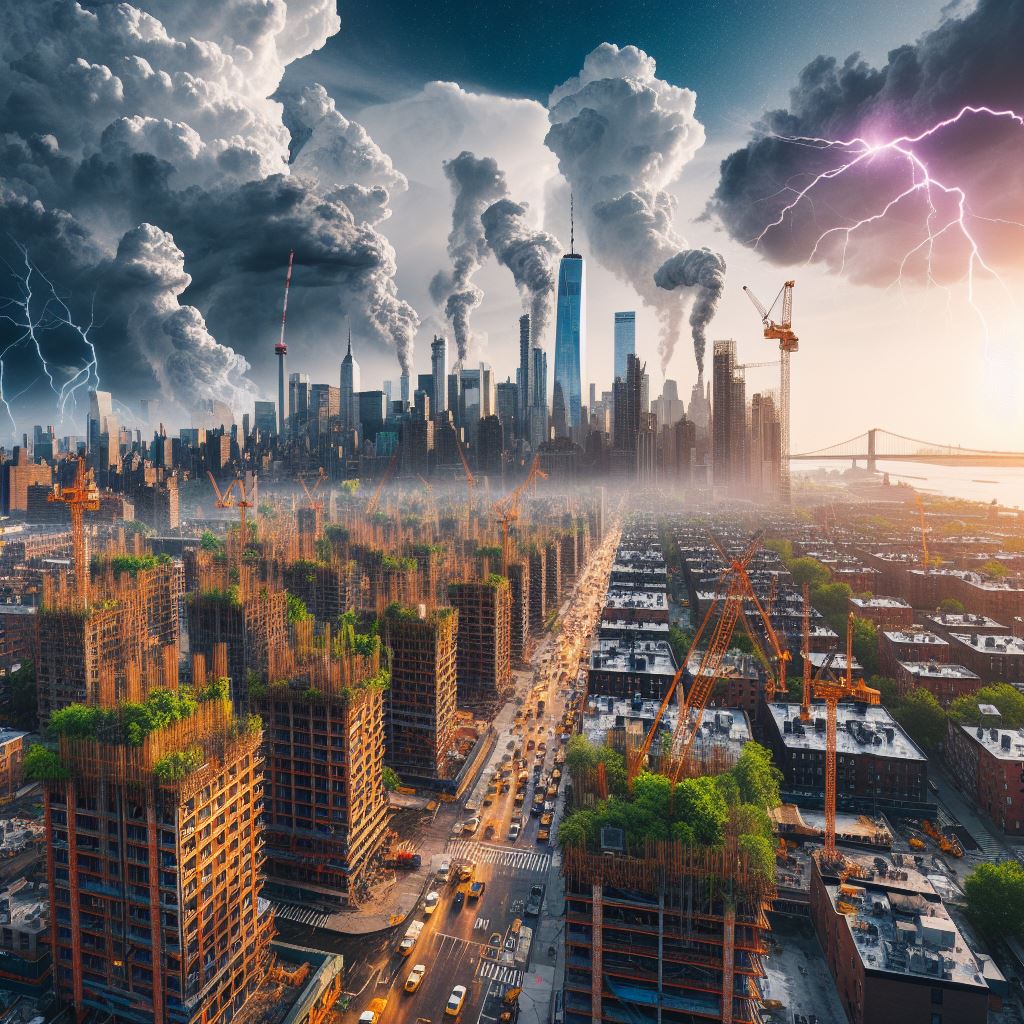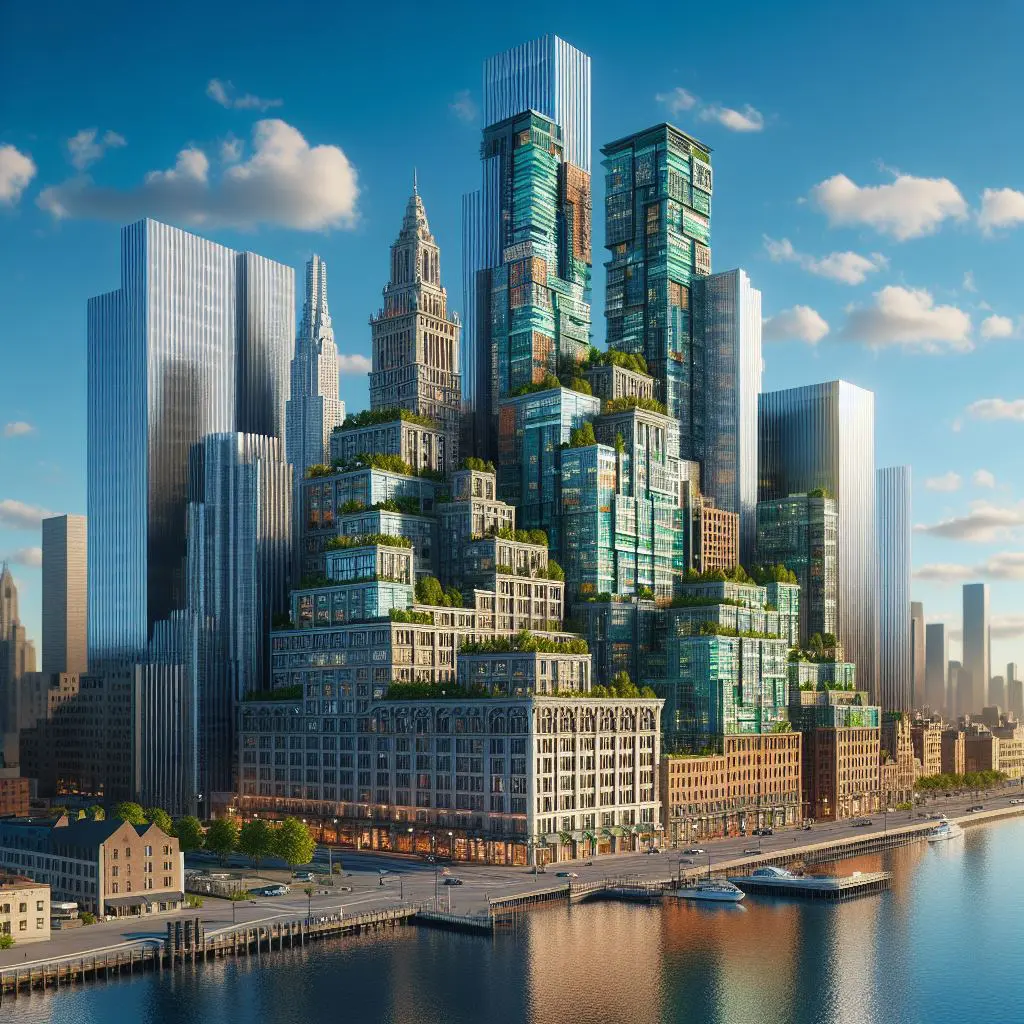Introduction
The skyline of New York City is not only iconic for its architectural marvels but also for the collective environmental responsibility it shoulders. The introduction of Local Law 97 under the Comprehensive Climate Mobilization Act serves as a watershed moment in this journey towards sustainable urban living. This legislation puts New York on the map as one of the cities leading the charge in global climate action by tackling the root of urban emissions: buildings.
However, with great legislation comes great responsibility for property owners. The potential risks for non-compliance extend from significant financial penalties to reputational damage. It’s no understatement to say that a lack of awareness and action regarding Local Law 97 could leave many properties—and their owners—at considerable risk. As such, grasping the nuances of this law, its implications, and how to check for violations is an essential task for anyone involved in the New York property market.
Understanding Local Law 97
At the heart of the Climate Mobilization Act is Local Law 97, a pivotal component that has introduced stringent carbon emission standards for buildings over 25,000 square feet. This includes a diverse array of property types from residential complexes to commercial and industrial spaces that collectively contribute to a significant portion of the city’s carbon output. New York’s Local Law 97, found here, is not merely a set of guidelines but a strict regulatory framework with tangible targets and clear deadlines.
Property owners must assess their buildings against these specified emission limits, bearing in mind that the benchmarks will only get more stringent as the law progresses towards its 2030 and 2050 goals. The intention is to reduce overall emissions from such buildings by 40% by the year 2030 and by a commendable 80% by 2050, catalyzing a city-wide push for sustainable real estate.
Why Your Property Might Be at Risk
Non-compliance with Local Law 97 is a high-stakes game that property owners cannot afford to lose. Penalties can run steep, costing owners $268 for every metric ton their building is over the limit, potentially accumulating to astronomical sums annually for larger buildings that are significantly non-compliant. The financial burden doesn’t stop there; properties that fail to meet these standards may encounter difficulties in securing financing, as banks and investors are increasingly tuned to the risks associated with regulatory non-compliance.
It’s no secret that sustainability is becoming a cornerstone of corporate social responsibility, and properties flouting these norms face not only financial but also reputational risks. Property owners must consider long-term implications as well—buildings that do not align with modern energy standards could face devaluation or become less attractive to potential tenants and buyers.
Quick Check Guide for Local Law 97 Violations
To ascertain whether your property is on the right side of the law, a detailed review and audit are paramount. A preliminary check can begin with:
- Determining if your building meets the criteria—primarily, if it is over 25,000 square feet.
- Comparing current utility and energy consumption data against the law’s thresholds.
- Engaging with qualified professionals, such as sustainability consultants and energy auditors, who can provide a thorough analysis and highlight potential areas of risk.
Violations can be due to a myriad of factors, from inefficient energy systems and lack of modern insulation to faulty reporting. Seeking expert advice early on can help in navigating the complex compliance landscape.
Implementing Corrective Measures
Discovering a violation should be a call to action. Remedial measures could include retrofitting buildings with energy-efficient technologies, integrating renewable energy sources, or enhancing insulation and sealing. While the initial expenditure may seem daunting, the New York State Energy Research and Development Authority (NYSERDA) offers programs to assist in funding energy-saving improvements, which can mitigate some of these costs.
Beyond avoiding fines, there are palpable benefits to achieving compliance. Efficient buildings can significantly reduce operational costs through lower energy consumption. Additionally, there is a growing trend of tenants preferring sustainable living and working spaces, which can ultimately increase a property’s competitiveness and value in the marketplace.

Staying Updated and Informed
The legal landscape, particularly in the realm of environmental regulation, is continuously evolving. Maintaining compliance with Local Law 97 means staying abreast of any and all amendments to the law. Resources such as the NYC Mayor’s Office of Sustainability offer valuable updates and insights.
Savvy property owners should periodically review energy use, emissions reports, and ensure that all records are accurately maintained. A proactive approach will not only facilitate ongoing compliance but also position property owners as leaders in the movement towards a more sustainable urban environment.
Conclusion
The compliance landscape in New York City has dramatically shifted with the introduction of Local Law 97. Property owners now find themselves as key players in the city’s environmental future. The risks of non-compliance are multifaceted and significant—from financial penalties to diminished reputation and property value.
However, the call to action engendered by Local Law 97 is also an opportunity. By ensuring your property meets or exceeds these standards, you contribute to a larger movement for sustainability and position your investment for success in an increasingly environmentally-conscious market. The time for assessment, action, and adaptation is now—your property, and our planet, depend on it.



